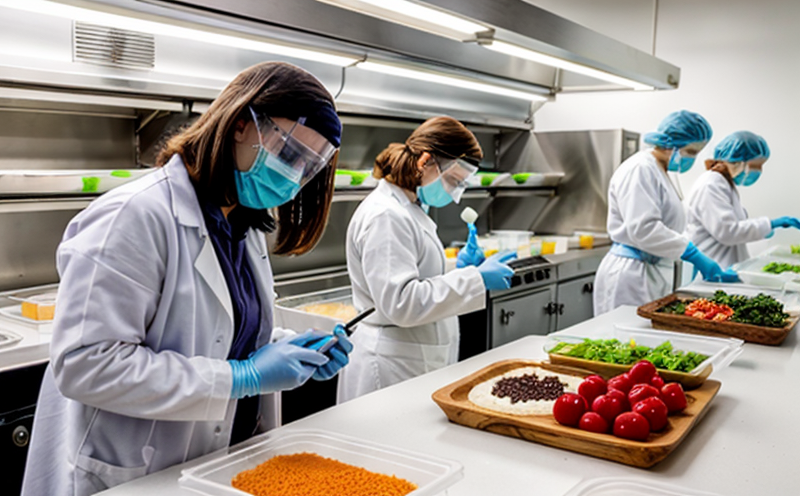ISO 6579-2 Salmonella spp. Enumeration Testing
The enumeration of Salmonella species in food products is crucial to ensure public health and safety, especially given the high prevalence of contamination risks from various sources such as poultry, meat, dairy products, and ready-to-eat meals. ISO 6579-2 provides a standardized method for the isolation and counting of Salmonella species in food samples.
The process involves several steps including sample preparation, enrichment culture using selective media like Ringer's Broth or Buffered Peptone Water (BPW), inoculation onto specialized agar plates such as Xylose Lysine Deoxycholate (XLD) or Brilliant Green Agar, and incubation conditions that favor the growth of Salmonella. This method ensures accurate enumeration by minimizing the interference from other microorganisms present in complex food matrices.
The significance of this testing cannot be overstated as it helps regulatory authorities and food processors identify potential hazards early in the supply chain. By adhering to ISO 6579-2, laboratories ensure that their results are reliable, repeatable, and comparable with international standards, thereby enhancing trust among consumers.
The enumeration technique described by ISO 6579-2 is particularly important for ensuring compliance with food safety regulations worldwide. It supports the reduction of contamination risks through effective monitoring programs implemented by food manufacturers and distributors.
Applied Standards
The testing method outlined in ISO 6579-2 is based on internationally recognized guidelines that ensure consistency across different laboratories. This standard provides detailed instructions for sample preparation, inoculation methods, incubation conditions, and interpretation of results.
Some key aspects include:
- Sample Preparation: Ensures homogeneity and represents the entire sample accurately. This step involves thorough mixing or blending to avoid biases introduced by non-uniform sampling.
- Inoculation: Proper inoculation into enrichment broths is critical for selective growth of target organisms, enhancing detection sensitivity.
- Incubation Conditions: Maintaining optimal temperatures and times allows for consistent results across different laboratories.
These parameters are crucial not only in obtaining accurate counts but also in ensuring that the test results can be relied upon by regulatory bodies like the FDA, WHO, or EU food safety agencies.
Scope and Methodology
| Step | Description | Details |
|---|---|---|
| Sample Preparation | Mixing or blending the sample to ensure homogeneity. | Thoroughly mix the sample for at least 30 seconds using a vortex mixer. |
| Inoculation into Enrichment Broth | Transfer a known volume of the sample to the enrichment broth. | Use Ringer's Broth or Buffered Peptone Water for the inoculum at a ratio of 1:10 (sample:broth). |
| Inoculation onto Agar Plates | Inoculate the enriched broth into XLD or Brilliant Green Agar plates. | Ensure even spread using a sterile inoculating loop or spreader. |
| Incubation Conditions | Incubate at 36°C ± 1°C for 24 hours ± 2 hours. | Use an incubator with temperature control and humidity monitoring to ensure consistent conditions. |
| Counting Colonies | Count the colonies on the agar plates after incubation. | Colonies should be counted in a circular area of 1 cm diameter for each plate. |
Eurolab Advantages
At Eurolab, we pride ourselves on offering comprehensive and reliable food microbiology testing services. Our expertise in ISO 6579-2 Salmonella spp. enumeration includes:
- State-of-the-Art Facilities: Equipped with advanced instrumentation to ensure precise sample handling and analysis.
- Experienced Technicians: Our team is trained in the latest techniques, ensuring accurate and timely results.
- Rigorous Quality Assurance: We maintain strict adherence to international standards to provide reliable data.
We understand the critical importance of food safety and quality, which is why we offer these services with exceptional accuracy and reliability. Our commitment to excellence ensures that our clients can make informed decisions based on accurate microbiological testing results.





